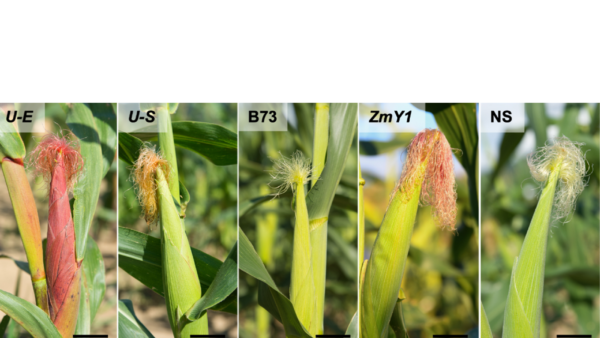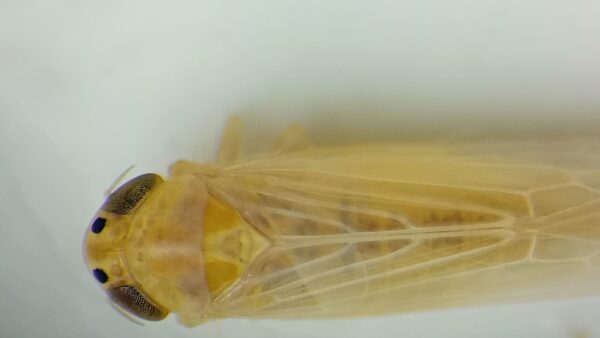States are taking steps to avoid another year of widespread complaints about damage from a popular herbicide, a move that has Monsanto Co., one of its manufacturers, on edge.
At least five states — Arkansas, Missouri, Minnesota, North Dakota, and Tennessee — have proposed or implemented restrictions on formulations of dicamba, with more states likely to follow suit in the next month.
The states’ moves build on the EPA’s restrictions that for the first time required training to use the pesticides and record-keeping on its use. Some states have set cutoff dates as well as temperature limits for when the herbicide can be used.
In addition to those five states, Kansas is reportedly considering restrictions, although the Kansas Department of Agriculture has yet to offer details.
Soybean and cotton growers had access for the first time in 2017 to three new versions of the decades-old herbicide. The weedkillers are intended for use with Monsanto’s genetically engineered crops that don’t die when sprayed with dicamba.
The new formulations are marketed as a solution to stubborn weeds that no longer die with traditional weedkillers. Manufacturers Monsanto and BASF SE took dicamba — a chemical prone to drifting away from its intended field and settling elsewhere — and tinkered with the chemistry to make their formulations less likely to evaporate.
Nevertheless, cases of dicamba damage on neighboring fields of soybeans have skyrocketed this year, and some university scientists in the worst-hit states say the new formulations still travel off-target.
‘Focus Is Misplaced’
Monsanto is not happy about these state restrictions. The company has vigorously defended its product XtendiMax, which was designed to be low-volatility.
BASF and DuPont & Co. have also said their products are not responsible for the more than 3 million acres of soybean damage this year in the U.S. DuPont makes dicamba using Monsanto’s low-volatility technology.
“I understand what the states are trying to do, but the focus is misplaced,” Scott Partridge, vice president of global strategy for Monsanto, tells Bloomberg News.
There’s no evidence supporting cutoff dates or maximum temperatures, Partridge added. A cutoff date could send the wrong message, he said.
“That isn’t what the science shows. If labels are followed, these new formulations are safe and can be used effectively, and provide tremendous weed control,” he says.
Monsanto, as well as farmers who benefit from dicamba and want to continue using it, have sued the Arkansas State Plant Board over its decision to implement a relatively early cutoff date—Apr. 16, 2018—for using dicamba. The April date would essentially ban any dicamba spraying on soybean crops, which are typically planted in May.
An Arkansas legislative committee recently voted to send the regulations back to the plant board for reconsideration, meaning that cutoff date could never go into effect. The plant board first proposed the seasonal ban Sept. 21.
Training To Begin Soon
There’s a reason why states are making their announcements now, Andrew Thostenson, a pesticide program specialist with North Dakota State University Extension, told Bloomberg Environment.
Agriculture agencies are getting their training materials ready for next spring, when farmers will need some direction on how to use dicamba without damaging their neighbors’ crops.
“I would be very surprised if we didn’t have a good idea of where things are [with other states] by the end of January,” Thostenson says.
Missouri—the state that received the second-highest number of complaints after Arkansas—announced Dec. 11 that it would prohibit Monsanto, BASF, and Dupont dicamba products after June 1, 2018m in 10 southeast Missouri counties, and after July 15, 2018 in all remaining counties.
The rules would also prohibit spraying before 7:30 a.m. or after 5:30 p.m., when atmospheric conditions may create the right environment for drift, and mandate training.
Tennessee’s approach is looser. Rather than implement a ban on the new formulations, the state has proposed that farmers use a hooded sprayer for any application from July 15 to Oct. 1. Older, more volatile versions of dicamba would be prohibited between May 15 and Oct. 1.
Temperature Restrictions
North Dakota and Minnesota have added temperature requirements to their rules. Like water, dicamba evaporates more quickly at higher temperatures, and some scientists say heat can facilitate the herbicide’s travel from one field to the next.
Farmers in North Dakota won’t be able to spray in 85-degree Fahrenheit weather or higher after June 30. Minnesotans also must follow the 85-degree rule and can’t use dicamba on soybean crops after June 20.
Although Indiana has not set a cutoff date, the state set its own restrictions for both old and new formulations of dicamba before the Environmental Protection Agency. The rules makes the herbicide a “restricted use” product and provides the state with a mechanism to track who purchased dicamba and applied dicamba, so that a record is created in the case that an incident arises.
Indiana has not set off a cutoff date because the Office of Indiana State Chemist has yet to determine the underlying cause of the drift, David Scott, pesticide program administrator for the office, told Bloomberg Environment.
“We don’t know if a cutoff date would fix it,” he says.
Not all hard-hit states are looking to go further than the federal standard. Illinois, Iowa, and Nebraska, where 245, 107 and 93 complaints were filed, respectively, will not propose or implement additional restrictions, according to officials and news reports in those states.
The EPA approval for the new dicamba products expires on Nov. 8, 2018, unless the agency decides to grant long-term registration for the products.
Source: Bloomberg Environment













